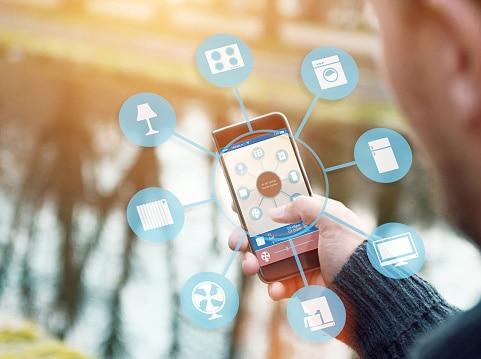The Internet of Things (IoT) is growing at a phenomenal rate as it revolutionizes the (business) world, and is poised for exponential growth and profitability in the coming decades. Everything from measuring a cow’s diary output variances to tomato growth rates to detecting heart murmurs will be calculated by devices with their own IP addresses, and which have access to Internet databases via the Information and Communications Technology (ICT) interlink. But as Luis Alvarez, CEO of Alvarez Technology Group of Salinas, CA says, “The greatest opportunity is in the services side because that is really the differentiator for me in how IoT is going to be deployed in our clients’ world. Whether you’re in the SMB space or the enterprise space, it will be all about services.”
Alvarez is working overtime, with one of his teams’ main goals being increasing agricultural yields by 100% over the next five years using his IoT services strategy. His company partners with companies like the Netherlands-based Floricultura, which transports orchid seedlings to a San Francisco greenhouse that utilizes robotic devices to transplant the orchids and add more dirt as they grow. Alvarez’ company worked on automating the process – which doesn’t foresee the elimination of human greenhouse workers, farmers, or gardeners, but instead envisions turning them into greenhouse or field managers, overseeing the IoT devices and regulating their efficiency. This is done through data analytics and specialized monitoring systems that control and automate the IoT-ITC device networks through the back end.

Alvarez has managed services agreements with his clients, with whom he partners to oversee that these IoT networks cut costs and increase productivity in what could be called a “positive sum game” which is always evolving upward (or tweaked to do so) with gains, not losses. And that is the heart of Alvarez’ enthusiasm when he speaks of the service-side of the Internet of Things.
The Essence of IoT
So, what is the true essence of IoT services? Enterprisers and small-to-medium-sized business owners can appreciate the potential inherent in having ICT-IoT devices measuring and relaying data on literally every metric possible (and even some new ones) in the business and domestic world, but how can they accurately calculate the microeconomic impact of, say, replacing standard thermostats on refrigerators with IoT-ITC interlinked self-regulating thermostats that can monitor and control their own temperature, as well as send out alerts to the network letting owners know when a breakdown is about to occur? Likewise, for any regulatory or intrinsic part of any device or machine that currently needs human diagnostics and monitoring to maintain it? The economic implications of IoT, this harbinger of an AI-controlled world, are truly enormous.
IoT Security Concerns
Playing into all this IoT data networking upswing is the idea of security. The inherent concerns about AI-regulated or controlled machinery have been long and well-established, and balancing and controlling that is also one of Alvarez’ teams’ main goals. Alvarez’ company is acutely aware of the concomitant need for security right along with the self-regulating IoT device networking. “Another big opportunity for solution providers is security – especially because many technology IoT startups who are trying to introduce their products to the agricultural community do not prioritize security,” said Alvarez, who will be speaking on IoT in October at the KMC Genius Summit 2016 taking place at The Langham Hotel in Chicago. Cybersecurity will be a main topic of discussion there, with multiple speakers weighing in at the conference, which takes place October 10-12, with a registration deadline of September 8th.





